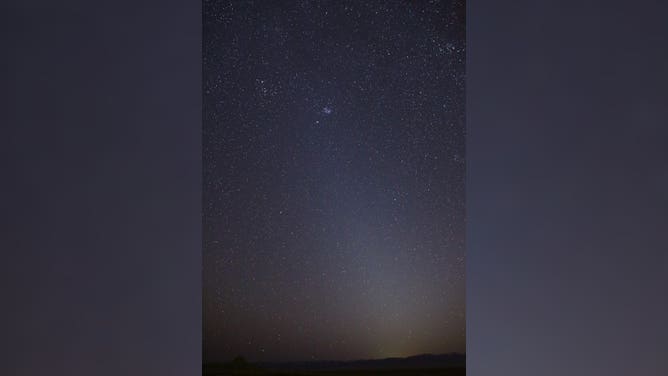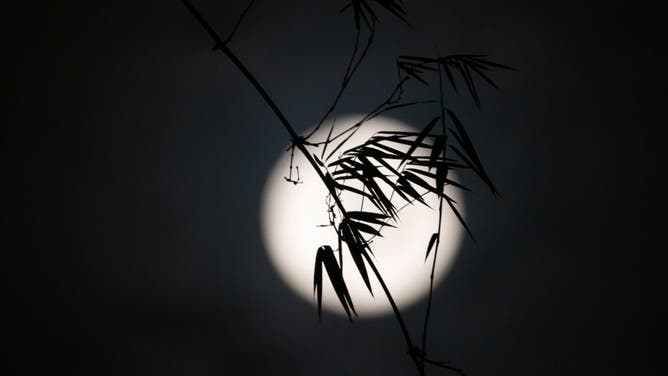September skygazing highlights: Final supermoon of 2023, zodiacal light glows before dawn
Those in the Northern Hemisphere can look for the zodiacal light in the east in the pre-dawn hours in September. Fall's first full moon will be the last supermoon of 2023.
Super blue moon rises behind Golden Gate bridge in hazy San Francisco sky
According to NASA, the next super blue moons won’t be seen until January and March of 2037.
Summer took the cake with three bright supermoons, but the first month of fall will get the final supermoon of the year and bring the chance to see a celestial pillar of sunlight known as zodiacal light.
Here's a roundup of reasons to step outside and look up to the night sky in September.
Glowing space dust

This photo shows the zodiacal light as it appeared on March 1, 2021, in Skull Valley, Utah. (Image: NASA/JPL-Caltech)
(NASA)
According to NASA, the zodiacal light is sunlight reflecting off an interplanetary dust cloud. Scientists believe the dust was created from comets and asteroids. Data from NASA's Juno spacecraft orbiting Jupiter suggest some of the dust actually comes from dust storms on Mars. These tiny dust particles fill the inner solar system and the innermost part of the main asteroid belt beyond Mars.
The middle of September will offer an excellent opportunity to see the zodiacal light when there is a new Moon. NASA said dark skies provide the best chance to observe the celestial light. The zodiacal light looks triangular or cone-shaped and will stretch up from the horizon.
Those in the Northern Hemisphere can look for the zodiacal light in the east in the hours after midnight and morning twilight. The light can be spotted in the Southern Hemisphere by looking west after evening twilight.
The zodiacal light is usually visible in March and September.
Harvest Supermoon kicks off fall

The full Harvest Moon rises over the sky in Ungaran, Central Java Province, Indonesia on September 11, 2022. (Photo by WF Sihardian/NurPhoto via Getty Images)
On Sept. 29, the full Moon will also be a supermoon because the Moon is at its nearest point in orbit to Earth during the full moon. Known as the Harvest Moon, it will also be the year's last supermoon. The previous three full moons – one in July and two in August – were also supermoons. With two full Moons in August, the second one was known as a Blue Moon for its rarity.
According to the Old Farmer's Almanac, the Harvest Full Moon is named not for the month it falls on but when the autumnal equinox happens, either in September or October. This year, it falls on Sept. 23. The Harvest Moon is named for the time when many crops in the Northern Hemisphere typically reach their peak.
WHAT DOES SIZZLING SUMMER MEAN FOR FALL FOLIAGE? HERE'S A PREVIEW
The moon will appear bright starting on Thursday, September 28, before reaching peak illumination on the morning of September 29.
Bits of asteroid coming in for landing

This image shows four views of asteroid Bennu along with a corresponding global mosaic. The images were taken on Dec. 2, 2018, by the OSIRIS-REx spacecraft’s PolyCam camera. (Image: NASA/Goddard/University of Arizona)
(NASA)
The last event originating from the night sky won't be visible for most to see with the naked eye.
NASA's spacecraft OSIRIS-REx is scheduled to send a capsule carrying pieces of the asteroid Bennu to Earth. The spaceship-shaped capsule is set to land via parachute in the desert of Utah on Sept. 24.
WATCH OUT FOR THESE ASTRONOMICAL EVENTS IN 2023
The dirt-like material and rocks collected from Bennu will help scientists learn more about near-Earth asteroids, considered fossils of our solar system.
